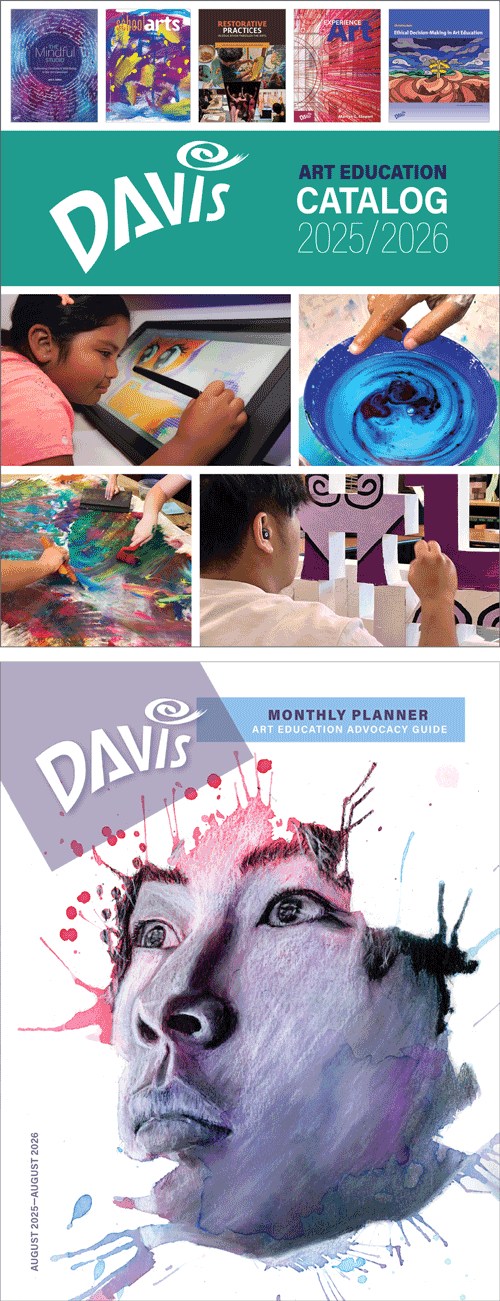Native American Heritage Month
National Native American Heritage Month is drawing to a close.
Since 1990, the US has celebrated National Native American Heritage Month in November to commemorate indigenous peoples’ sacrifices, and contributions to American culture. Artists like Nanibah Chacon (born 1980, Navajo Nation, New Mexico) document traditions of their people in contemporary art.
The Close of Native American Heritage Month
 |
| Nanibah Chacon, Naadáá Jii Shosh, 2016, Inscription House Senior Center, Shonto, AZ, acrylic latex on cinder block © 2025 Nanibah Chacon, image courtesy of the Artist (8s-30550) |
The name Ts'ah Bii Kin (Inscription House) is named after a log structure in a sagebrush field, which led to the name "House in the Sagebrush", Crow Canyon Archeological Center, Cortez, CO. A Senior Center in this community (in the Navajo Nation) provides services for elders. Naadáá is the Navajo word for "corn". Chacon was inspired to paint this after seeing her grandpa rubbing the dry corn cobs together to remove the corn kernels for grinding, a process called Naadáá Jii Shosh in Navajo. Aside from the traditional association of corn as a major form of sustenance for Southwestern native cultures, the cross symbols are particular to the Navajo. The equilateral cross symbol is seen in many Navajo weavings, and it symbolizes Spider Woman, who, tradition has it, instructed Navajo women in the art of weaving.
Background
The art form of graffiti has been around since the ancient world. It has been found in ancient Roman cities such as Pompeii, and has been discovered in ancient Mayan religious sites. In both cultures it was illegal to deface public buildings, but, the art form was also an important means of communication.
Contemporary graffiti evolved in American urban areas starting in the 1960s. It spans all racial and economic groups. Its appearance on public buildings, housing and public transportation in American cities has spread as a cultural phenomenon around the world since the "renaissance" in graffiti art in the 1980s. The majority of these artists were self-taught.
The first ever exhibition of graffiti artists’ work in a gallery setting occurred in 1973, with the exhibition “United Graffiti Artists” at the Street Art Museum in Amsterdam, Netherlands. In 1983, the Sidney Janis Gallery in New York brought graffiti art to the commercial art world in the US with the landmark exhibition "Post-Graffiti."
Nanibah “Nani” Chacon, is a Diné (Navajo) and Chicana artist. She is most recognized as a painter and muralist. Her work has been recognized for its unique style and attention paid to site specificity, as well the integration of socio-political issues effecting women and indigenous peoples. Community based arts and educational integration are also a key component Nani’s work.
Nani was born in Gallup, New Mexico and grew up both on both Navajo reservation and New Mexico. Her most notable work has been within the public arts sector, in which she has over 20 years of experience. She began a career as a graffiti writer. In 2003 she received her Bachelor in Education from the University of New Mexico. In 2005, she began exploring other mediums and developed strong aptitude in painting, illustration and design.
In 2012, she returned to the public eye creating work on walls. Soon this work transpired to creating murals and large scale public works. A return to working on walls and in public setting was a natural progression that facilitates the content of her work as well as personal philosophy that art should be accessible and a meaningful catalyst for social change. Nani has created works both Nationally and Internationally, working with multiple organizations and institutions.
Correlations to Davis Programs: Explorations in Art 2E grade 6, 3.4; A Community Connection 2E, Unit 9.5; A Global Pursuit 2E 2.5, 3.1; A Personal Journey 2E 4.4; Experience Art 3.2, 7.1; The Visual Experience 4E 11.9; Experience Painting chapter 8

Comments